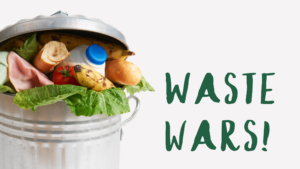Written by Rebecca Zosel, a mother of three children aged 9, 7 and 2; Public Health Consultant; and Parents Voice Steering Committee Parent Representative. Connect with Rebecca via Twitter or LinkedIn.
Increasing access to fresh fruit is a small change, but an important one that can make a big impact on the health of our children. This article reflects on a partnership recently set up between my children’s school, St. Macartan’s Parish Primary School on the Mornington Peninsula in Victoria, and a local supermarket, which involves the supermarket providing weekly donations of fresh fruit. It offers a ‘how to’ guide for parents and schools wanting to establish similar partnerships with their local supermarket or grocery store to promote healthy eating at school. After all, school is where kids eat up to 40 per cent of their daily food intake – so it offers a great opportunity to encourage healthy eating.
A Victorian school’s success
On behalf of the St. Macartan’s Parent Group Association, I recently engaged a major supermarket to team up with our local primary school and donate a weekly box of fruit (around 80 pieces). Every Monday morning, parents collect the fruit from the supermarket and distribute it to classrooms throughout the school. Teachers encourage children to eat the fruit, particularly children who haven’t brought fruit from home. This is one of several initiatives at the school to promote healthy eating, including a set break every morning for children to snack on fruit and vegetables.
The steps below reflect our school’s experience and insights around partnering with a local supermarket to provide fresh fruit; (I hope it helps others to establish similar initiatives)
1. Establish partnership with local supermarket or grocery store.
Establish partnership with local supermarket or grocery store. Approach your local supermarket or grocery store to find out if they donate fruit to local schools (our local supermarket donates to multiple schools in the area) and if they do, find out who you should speak with. Tips for submitting your request for fruit donations:
• Offer to put your request in writing – use the school letterhead for authenticity.
• Submit a request on behalf of the school or the school’s parent representative body, rather than speaking as an individual parent – this will add weight to the request.
• Emphasise your common purpose: promoting healthy eating and healthy children.
• Provide some context on the school. You may like to describe any existing activity to promote healthy eating at school, and how you intend to use the donation. Help to guide the supermarket’s decision around the amount of fruit to donate by indicating the school size (e.g. number of children, year levels and/or classrooms). We clearly stated that the donated fruit would supplement the fruit that children already bring from home, rather than replace it –we weren’t seeking a piece of fruit for every child but instead a ‘back up’ supply for each year level. We receive approximately 80 pieces per week for a school of 620 children, which is approximately 1 piece of fruit for every 8 children.
• Thank them for considering the request and acknowledge that any contribution is welcome. It is interesting to note that the fruit we receive is fruit that would otherwise go onto the shelf for sale (imperfect fruit is donated elsewhere) and therefore, the donation comes off the store’s bottom line (i.e. it costs them money).
• Once the partnership is established, offer to publicly thank the supermarket in the school newsletter (if possible) to build local awareness of the initiative and generate community goodwill. Provide them with your school logo so they can promote the partnership too.We thanked the supermarket in our school newsletter (below). We also provided them with our school logo so it could be included in some brochures and posters they were developing to promote the local community groups that they support.
2. Communicate with the school community
Once you’ve secured fruit donations from a local supermarket, it is important to communicate the initiative throughout the school community.
• Ensure teachers are aware of the initiative and encouraging children to eat the fruit. We focused on ‘access for all’ and priority for children who don’t bring fruit from home for whatever reason, or have eaten their fruit from home and are still hungry. Some people in your school community may think the initiative is being introduced due to disadvantage (i.e. families can’t afford fruit) which may be partially true, however it can lead to negative connotations and misguided concerns about eligibility and local need. We instead focused on the importance of healthy eating and having access to fresh fruit at school.
• Let parents know about the initiative. It was very well received by our parent community, with a record number of ‘Likes’ of the Facebook announcement. We emphasised to parents that children still needed to bring fruit from home every day to eat during fruit snack break – the fruit provided at school is a back-up supply.
• Be positive! This is a great initiative!!
3. Distribute the fruit
It helps to set up a system for distributing the fruit throughout the school. You may like to:
• Develop a roster of parents who can collect the fruit from the supermarket each week.
• Decide where the fruit will be located. For example, will you provide fruit in every classroom, per year level, in each building, or will it be centrally located in the office or staffroom. We purchased 7 bowls, one for each year level, and labelled the bowls clearly (e.g. Grade 1). We put our fruit bowls in wet areas so children can wash their hands and the fruit before eating.
• Make sure someone is responsible for distributing the fruit throughout the school. At our school the parents who collect the fruit from the supermarket each week are responsible for putting the fruit into the bowls and distributing the bowls throughout the school. We make sure the fruit is in place every Monday morning before school starts. We allocate fruit equally across year levels but take major absences such as school camps into consideration.
• Organise for the bowls to be collected and cleaned at the end of each week, so they are ready to be used again the following week.
• Decide what will happen with any leftovers.We distribute any leftover fruit to children as they leave school on Fridays.
4. Monitor the initiative
It is important to keep an eye on how things are going, for example:
• Keep in touch with the Store Manager to make sure the partnership is running smoothly – they are an important contact. Let them know when fruit isn’t required (e.g. school holidays) or you need to change your collection day (e.g. public holidays, curriculum days). Advise them if there are any problems, and provide positive feedback too. It is interesting to note that our fruit donation is linked to the Store Manager – if they’re transferred from the store the donation will be reviewed as it’s linked to the Store Manager, not the store – and a new manager may not want the cost.
• Monitor consumption. We monitor consumption across each year level by recording leftover fruit at the end of the week when bowls are collected. Our initiative has been underway for 3 weeks and as more people have become aware of it, leftover fruit has diminished from 25 pieces in the first week, to 7 in week 3.
• Allocate responsibility for oversight of the initiative. This may be a parent’s group, school staff (e.g. administration, wellbeing) or a student group (e.g. Student Representative Council). At our school responsibility rests with the Parent Group Association and it is a standing item on meeting agendas so it is regularly discussed. We have one parent coordinator who is the contact for the school, supermarket and parent volunteers. Let me know if you have any questions or advice. And last but not least, good luck! Connect with Rebecca via Twitter or LinkedIn.







